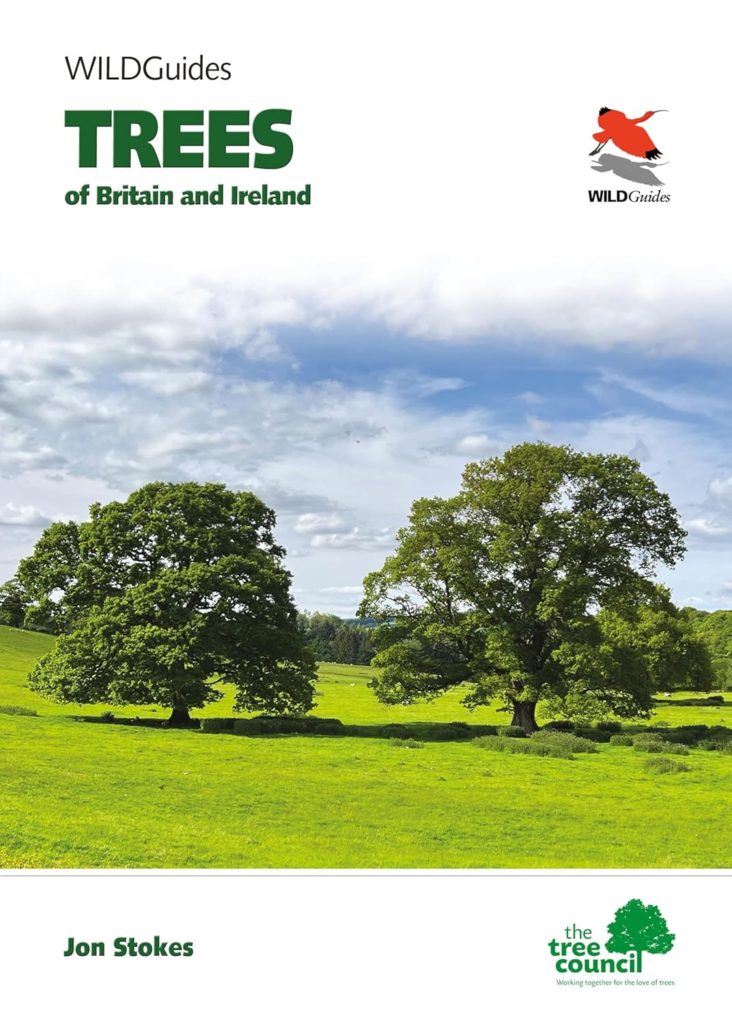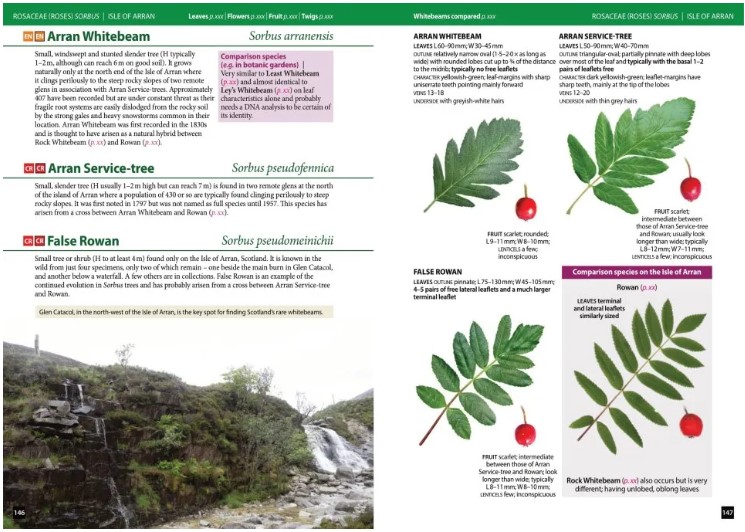
Trees of Britain and Ireland
Jon Stokes
Princeton University Press WILDGuides series
Published 22/4/25
ISBN 9780691224169
Trees of Britain and Ireland, a new field guide by Jon Stokes, Director of Trees, Science & Research at The Tree Council, certainly lives up to its billing as ‘A comprehensive photographic identification guide to all of the native trees and shrubs of Great Britain and Ireland and many of the common non-native species.’ For anyone wanting to confidently identify the trees in their woodland or local environment, and to learn more about tree ecology and species diversity, this is an ideal field guide. It has a level of detail that will also make it useful for those with more experience or specialist knowledge.
The book’s informative introductory chapters cover both basic tree biology and our influence on the tree species in our landscape. Criteria are provided for classifying species as native (natural colonisation 15,000-8,000 years ago), archaeophytes (introduced from the Neolithic to Medieval periods) and neophytes (introduced after c.1500), and also for how a tree is defined for the purposes of inclusion (or not) in the book. The functions of the component parts of a tree, its life-cycle, and the many factors that affect tree shape, including management techniques such as coppicing and pollarding, are described.
The introduction also covers the diverse habitats of trees in scrub, hedgerows, orchards, parkland, wood pasture and the different types of woodland, plus an interesting historical summary of treescapes in Britain and Ireland from the end of the last ice age to the present day. The importance of trees to wildlife, including ancient and veteran trees and dead wood, is emphasised both here and with illustrated accounts of ‘Associated species’ in the individual tree listings.
A Tree Identification section provides useful pointers for learning to spot particular species from their defining seasonal characteristics, such as the yellow catkins of Hazel in winter, the early blossom of Cherry Plum and Blackthorn in spring, the papery bracts of limes in autumn, or the distinctive bark of Beech and Scots Pine all year round. Comprehensive picture keys using leaves, flowers, fruit or winter twigs provide species identification and the corresponding page number, or direction to the relevant section if further identifying features are required.

The main body of the guide covers 113 native trees and shrubs as well as 190 common non-native species. Starting with the conifers, a general introduction is followed by a more detailed key that also features the cones. Each species description includes a brief history of how the tree came to be here, a distribution map, phenology chart (when in leaf, flower and seed), an illustration showing typical size and shape, a code for conservation status and edibility/toxicity, and bonus information in a ‘Did you know?’ box. The guide’s 3,000 colour photos include images of all relevant features for identification in different seasons, as well as pictures of the trees in a landscape setting.
Broadleaves are given a similarly thorough treatment, starting with the large rose family that encompasses hawthorns, apples, plums, cherries, pears and the Sorbus species: whitebeams, rowans and service-trees. I had no idea that there were so many types of whitebeam (42 currently recognised species) but with 36 pages devoted to them this will provide an excellent resource for sorting one Sorbus from another. There are also detailed sections on elms and willows, invaluable for those wanting to drill down into the less common or highly-localised species. The entry on Dwarf Willow includes my favourite illustration of tree size (reaching ankle-height!).
The guide is completed with sections on ‘Widespread introduced shrubs and small trees’ that have become naturalized, for example Lilac, Laburnum and invasive rhododendrons, and ‘Park, street & garden trees and shrubs’, such as Ginkgo, flowering quinces and magnolias, which are given briefer descriptions than the native trees. Their inclusion means that users of the guide should be able to identify all commonly-encountered trees and shrubs in Britain and Ireland.
The text is clearly written throughout, packing a lot of information into a relatively small space. However I was puzzled by the consistent use of the ± symbol to mean approximately, for example ‘after the last ice age (±15,000 years ago)’ or ‘H to ±18m’. In other cases it seems to be used to mean normally/to some degree (as in ±shiny or ±hairless). Use of the ~ symbol or an appropriate word would make these statements more sensible. My only other minor quibble is with the colour code used for species status, applied to the top of the pages and in Appendix 2: the colours for archaeophyte and neophyte are very similar (anyone with a colour vision deficit would probably struggle to distinguish them), and they don’t correspond very well with the colours provided in the key.
The author Jon Stokes said in a recent NHBS interview “I hope this book sparks an interest in learning more about my beloved trees. I hope it sparks a desire to go out and explore other aspects of our beautiful islands and the wealth of wildlife we have here.” I think that he is highly likely to have achieved these aims.
